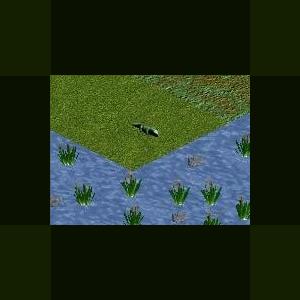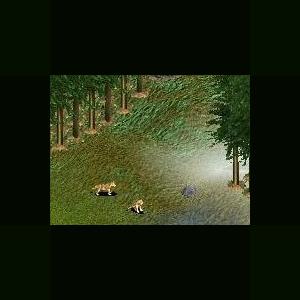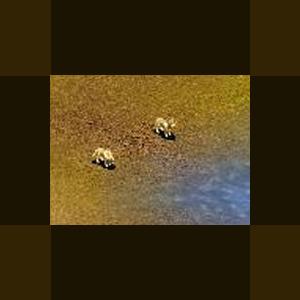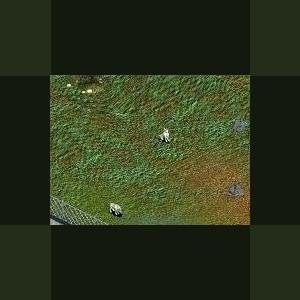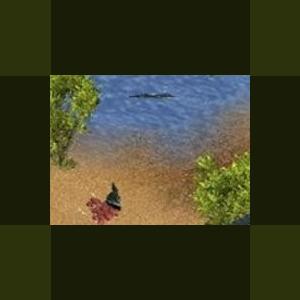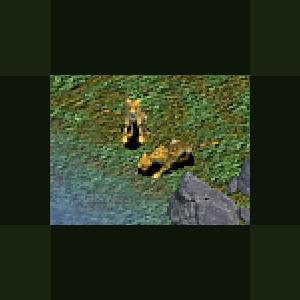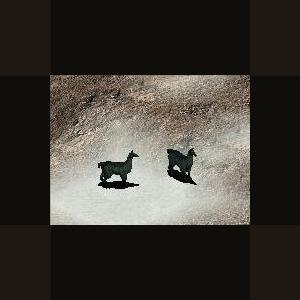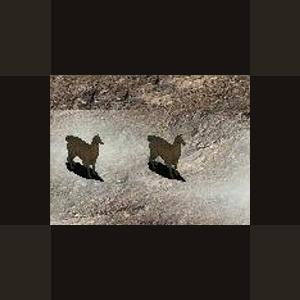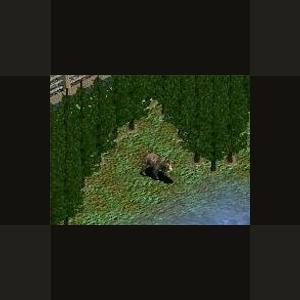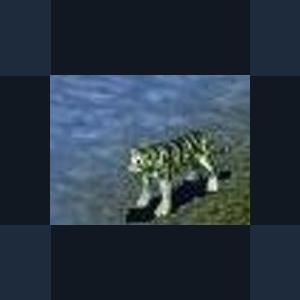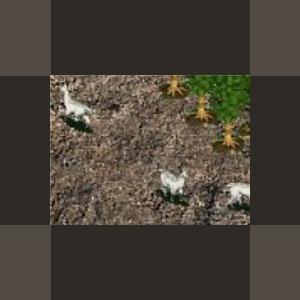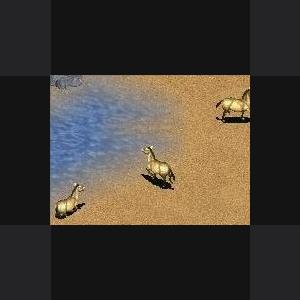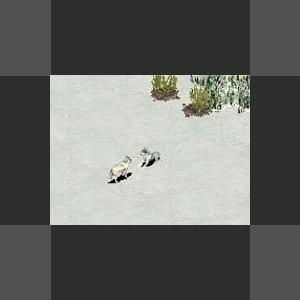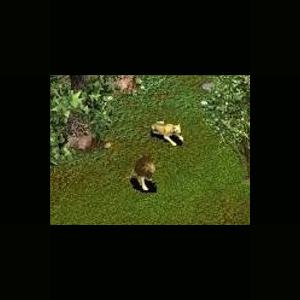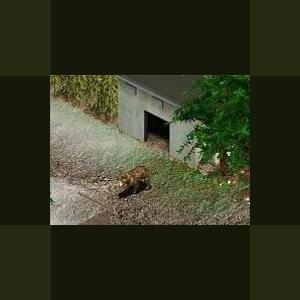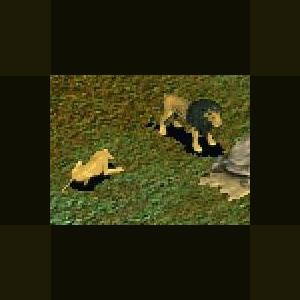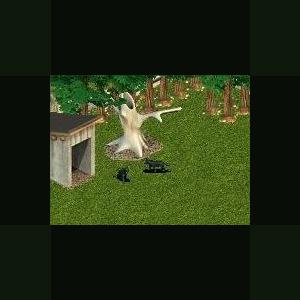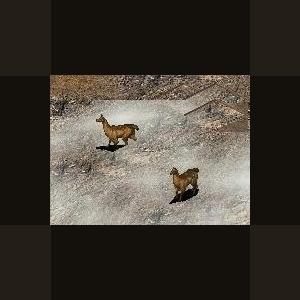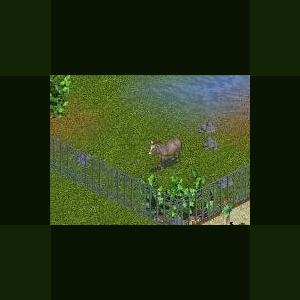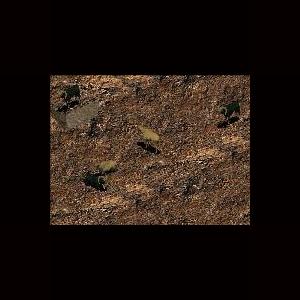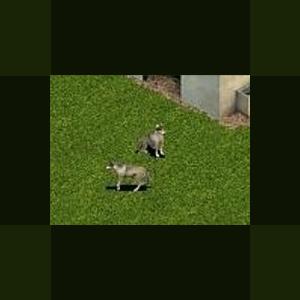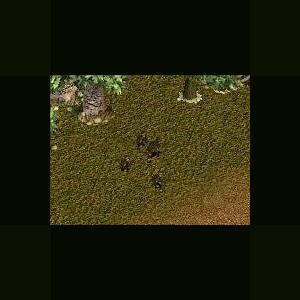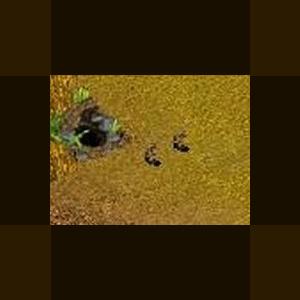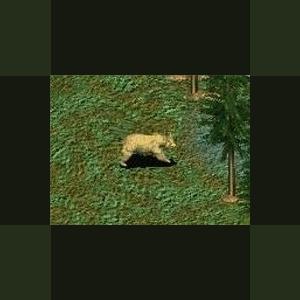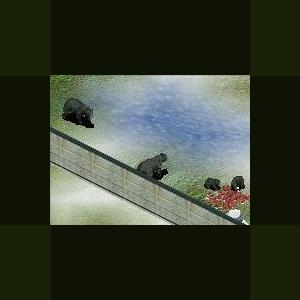279 files
-
Newtycoon the Newt by Jordan
By Guest
Newtycoon the Newt
Author: Jordan
Newtycoon the Newt or Tekkus juvenalis Newtensis
A strange little creature with a fixation on amphibians & a strange fear of magpies.It's notable for hanging around in ponds,but not distributing swords.After all,that's no basis for a system of government;supreme exec....sorry,I had a python,not a newt in mind for a minute.
One of the strangest things about this subspecies is that it not only replies to the calls of it's own species but to those of every other tek species.In great,& often interminable lenghth,peppering it's calls with german.Do not confuse it with the closely related species Angelfroggus & Seminariensis,which although they seem to be similar can be distuinguished by their relative silence compared to the newt variant.
Newtycoon the Newt was made by JordanMK, as an exclusive anniversary download for Tek Forums. (Thank you to Professor Paul for the interesting description of Newtycoon the Newt recopied above.)
Updated 2010-11-04
Just to save space with less in zip and smaller image.
Nothing new.
161 downloads
0 comments
Updated
-
Nordic Lynx by Jordan
By Guest
Nordic Lynx by Jordan
Made by Jordan and dedicated to Jane
Updated 2010-11-04
Just to save space with less in zip and smaller image.
Nothing new.
450 downloads
Updated
-
Pale Fox by Ghirin
By Guest
Pale Fox
Author: Ghirin
The pale fox (Vulpes pallida) is native to the southern portion of the Sahara desert and the semi-arid regions south of that desert, including thorny savannah and steppes. They are primarily a nocturnal species and tend to be social animals, building large communal burrows with tunnels that may be up to 15 meters long.
Pale foxes will eat a wide variety of foods, including insects, reptiles, eggs, small mammals, and fruits.
References:
Walker’s Mammals of the World, Nowak, 1999.
Created by Ghirin 2003
Updated 2010-11-05
Just to save space with less in zip and smaller image.
Nothing new.
293 downloads
0 comments
Updated
-
Westie by Jordan
By Guest
Westie by Jordan
The incredibly adorable West Highland White Terrier of Scotland. Dedicated to Paul and Snowy.
Updated 2010-11-11
Just to save space with less in zip and smaller image.
Nothing new.
171 downloads
Updated
-
Dwarf Desert Nile Crocodile by Ghirin
By Guest
Dwarf Desert Nile Crocodile
Author: Ghirin
The desert-adapted crocodiles are thought to be descended from the Nile crocodiles that lived in the region during lusher times. A number of isolated populations have either been found or described in the dry areas of the southern region of the Sahara Desert. These crocodiles are smaller than Nile crocodiles found in wetter areas, possibly due to lack of food.
These crocodiles inhabit two types of wetlands. One is a seasonal wetland formed by rainwater; the second is called a guelta and is formed when water collects in pools in a depression in a rocky plateau. When the water level drops too low for the crocodiles to survive, the animals go into caves or burrows and estivate (a type of warm-season hibernation).
Created by Ghirin 2004
Updated 2010-10-30
Just to save space with less in zip and smaller image.
Nothing new.
338 downloads
0 comments
Updated
-
Barbary Leopard by Ghirin
By Guest
Barbary Leopard by Ghirin
The Barbary Leopard resembles the familiar leopard of East Africa, but in keeping with its home in the snowy Atlas Mountains of North Africa, it is stockier, with a thicker coat. A bold and versatile cat, it may go for a month without drinking. It consumes nearly any form of protein, from beetles to antelope nearly twice its weight. The Barbary Leopard is also a predator of the Barbary Macaque. This leopard prefers a montane habitat of mixed coniferous and deciduous terrain. The Barbary Leopard is an endangered subspecies. Only 12 may remain in the Atlas Mountains.
Information and photos from: http://www.pbs.org/s...fe/leopard.htm.
Created By Ghirin 2003
Updated 2010-10-30
Just to save space with less in zip and smaller image.
Nothing new.
424 downloads
0 comments
Updated
-
Black Alpaca by Ghirin
By Guest
Black Alpaca by Ghirin
The alpaca (Lama pacos), a relative of the llama, is a domesticated camelid from the Andes Mountains of South America.
Unlike the llama, the alpaca has been bred for its wool and is much smaller than the llama. The wool of the alpaca is among the finest in the world, bested only by that of the vicuna and certain breeds of goat.
Alpacas come in two wool varieties, suri and huacaya. The wool of the suri alpaca is finer and straighter than that of the huacaya. It falls in locks along the sides of the suri alpaca. The huacaya alpaca is more common than the suri; its wool is crimpy and gives the huacaya a "teddy bear" appearance. The wool of either variety comes in several colors, from white to black.
The peoples of the Andes domesticated the ancestors of the alpaca approximately 5000 years ago and these animals were used as a source of wealth.
*Inspired by the Zoo Tycoon Brains Trust at the Zoo Tek Zoo Tycoon Forums.
References:
http://alpacaplanet....lpacas_FAQ.html
http://www.alpaca.com/thealpaca.cfm
http://www.americasa...outalpacas.html
http://www.llama-llo...id_history.html (excellent picture)
Walker's Mammals of the World, Nowak, 1999.
Updated 2010-10-30
Just to save space with less in zip and smaller image.
157 downloads
0 comments
Updated
-
Dark Brown Alpaca by Ghirin
By Guest
Dark Brown Alpaca by Ghirin
The alpaca (Lama pacos), a relative of the llama, is a domesticated camelid from the Andes Mountains of South America.
Unlike the llama, the alpaca has been bred for its wool and is much smaller than the llama. The wool of the alpaca is among the finest in the world, bested only by that of the vicuna and certain breeds of goat.
Alpacas come in two wool varieties, suri and huacaya. The wool of the suri alpaca is finer and straighter than that of the huacaya. It falls in locks along the sides of the suri alpaca. The huacaya alpaca is more common than the suri; its wool is crimpy and gives the huacaya a "teddy bear" appearance. The wool of either variety comes in several colors, from white to black.
The peoples of the Andes domesticated the ancestors of the alpaca approximately 5000 years ago and these animals were used as a source of wealth.
*Inspired by the Zoo Tycoon Brains Trust at the Zoo Tek Zoo Tycoon Forums.
References:
http://alpacaplanet.com/alpacas_FAQ.html
http://www.alpaca.com/thealpaca.cfm
http://www.americasalpaca.com/aboutalpacas.html
http://www.llama-llocater.com/camelid_history.html (excellent picture)
Walker's Mammals of the World, Nowak, 1999.
207.46.204.232 )
Updated 2010-10-30
Just to save space with less in zip and smaller image.
Nothing new.
105 downloads
0 comments
Updated
-
Syrian Bear by Ghirin
By Guest
Syrian Bear
Author: Ghirin
Syrian bears are small-sized brown bears native to the Levant and southwestern Asia. Very few exist in the wild and the species maybe extinct there; however, Syrian bears are found in zoos around the world.
Many authorities do not consider the Syrian bear a true subspecies, but it is sometimes referred to as Ursus arctos syriacus.
The Syrian bear is thought to be the bear mentioned in the Bible.
Updated 2010-11-06
Just to save space with less in zip and smaller image.
Nothing new.
256 downloads
0 comments
Updated
-
Spectre Tiger by Sundance
By Guest
Spectre Tiger
Spectre tigers make their home in the borderline between tropical jungles and
lagoons. The male Spectre tiger can grow up to ten feet in length, from its
head to the end of its tail, with a shoulder width of up to three feet.
Although very large (weighing up to 575 pounds), the Spectre tiger is not the
largest tiger; its cousin, the Siberian tiger, is the world's largest cat.
When a Spectre tiger roars, you can hear it almost two miles away.
(plus 6 other paragraphs)
Animal Characteristics:
Habitat: Rainforest; Location: Southeast Asia
Minimum happiness needed for chance of breeding: 95.
Preferred shelter: Rock Cave.
Animal can swim in water terrain.
Animal can jump.
Animal can climb cliffs.
Exhibit Preferences:
Foliage:
Mangrove Tree, Elephant Ear Tree, Foxtail Palm Tree, Rainforest Bush
Rainforest Fern, Water Lily, Water Reed, Thouarsus Cycad Tree (DD)
Bald Cypress Tree (DD), Fern Bush (DD), Horsetail (DD), Leptocycas Tree (DD)
Williamsonia Tree (DD), Sea Anemone (MM), Barnacles (MM), Beach Grass (MM)
Brittle Sea Star (MM), Clam Bed (MM), Orange Cup Coral (MM)
Divercate Tree Coral (MM), Feather Duster Worm (MM), Fire Coral (MM)
Kelp (MM), Sea Lettuce (MM), Red Gorgonian (MM), Sargassum (MM)
Sand Dollar (MM), Sea Cucumber (MM), Sea Star (MM), Seaweed (MM)
Sea Grass (MM), Sea Sponge (MM), Stove Pipe Sponge (MM), Tube Worm (MM)
Purple Sea Urchin (MM), Fallen Rainforest Tree (ES), Rainforest Stump (ES)
Rafflesia (ES), Giant Ficus Tree (ES), Durian Tree (ES)
Rocks:
Large Rock, Small Rock - Medium, Small Rock - Small, Stone Ruins
Rainforest Rock - Formation, Medium Aquatic Rock (DD)
Small Ocean Floor Rock (MM), Medium Coral Formation (MM)
Large Ocean Floor Rock (MM), Medium Ocean Floor Rock (MM)
Large Coral Formation (MM), Iceberg (MM), Isle Rock (MM)
Mossy Rainforest Rock (ES), Limestone Rock (ES)
Exhibit Construction:
Number of animals allowed per exhibit: 2-6 with 35 squares for each adult.
Exhibit size (for 2 adults): 70 grid squares
Terrain (for exhibit with 70 grid squares):
24 Rainforest Floor, 7 Grass, 4 Dirt, 14 Sand, 21 Fresh Water
Foliage (for exhibit with 70 grid squares):
11 grid squares should contain foliage.
Foliage that would give the most happiness: Mangrove Tree
Since this is a small plant, greatest happiness will occur
if each of the 11 grid squares contains 4 of this plant.
Rocks (for exhibit with 70 grid squares):
11 Small Ocean Floor Rock (MM), which is its most liked rock.
Updated 2010-11-06
Just to save space with less in zip and smaller image.
Nothing new.
232 downloads
0 comments
Updated
-
White Alpaca by Ghirin
By Guest
White Alpaca by Ghirin
The alpaca (Lama pacos), a relative of the llama, is a domesticated camelid from the Andes Mountains of South America.
Unlike the llama, the alpaca has been bred for its wool and is much smaller than the llama. The wool of the alpaca is among the finest in the world, bested only by that of the vicuna and certain breeds of goat.
Alpacas come in two wool varieties, suri and huacaya. The wool of the suri alpaca is finer and straighter than that of the huacaya. It falls in locks along the sides of the suri alpaca. The huacaya alpaca is more common than the suri; its wool is crimpy and gives the huacaya a "teddy bear" appearance. The wool of either variety comes in several colors, from white to black.
The peoples of the Andes domesticated the ancestors of the alpaca approximately 5000 years ago and these animals were used as a source of wealth.
*Inspired by the Zoo Tycoon Brains Trust at the Zoo Tek Zoo Tycoon Forums.
References:
http://alpacaplanet.com/alpacas_FAQ.html
http://www.alpaca.com/thealpaca.cfm
http://www.americasalpaca.com/aboutalpacas.html
http://www.llama-llocater.com/camelid_history.html (excellent picture)
Walker's Mammals of the World, Nowak, 1999.
Updated 2010-11-11
Just to save space with less in zip and smaller image.
Nothing new.
142 downloads
0 comments
Updated
-
Persian Onager by Ghirin
By Guest
Persian Onager by Ghirin
The Persian onager (Equus hemionus onager or E. onager) is one of the wild equines found in Asia.
This animal is well adapted to dry habitats such as scrub, desert, and dry steppes.
References:
http://nationalzoo.si.edu/publications/zoo...equidprimer.cfm
http://en.wikipedia.org/wiki/Onager
http://www.americazoo.com/goto/index/mammals/343.htm
http://www.sandiegozoo.org/animalbytes/t-wild_ass.html
Professor Paul's Nature Encyclopedia
*Inspired by the Zoo Tyccon Brains Trust at the Zoo Tek Forums.*
Updated 2010-11-05
Just to save space with less in zip and smaller image.
Nothing new.
343 downloads
0 comments
Updated
-
Winter Wolf by Ghirin
By Guest
Winter Wolf
Author: Ghirin
Winter wolves are large white wolves that dwell in the cold lands of the north. Unlike regular white wolves, they are able to breathe a cone of cold and have freezing bites.
Created by Ghirin 2005
Updated 2010-11-11
Just to save space with less in zip and smaller image.
Nothing new.
271 downloads
0 comments
Updated
-
Nemean Lion by Ghirin
By Guest
Nemean Lion
Author: Ghirin
The Nemean lion was a fierce creature that terrorized the people of Argolis in ancient Greece. It was the son of the monsters Typhon and Echidna and brother to the Theban Sphinx.
As his first Labor, Hercules had to kill the Nemean lion and bring the skin back to his cousin, the King of Mycenae. Hercules travelled to the Nemean plain in search of the great beast. At first, he tried to kill the lion with bronze-tipped arrows, but the arrows bounced off of the lion's tough hide. Realizing that regular weapons could not harm the lion, Hercules used his arms to strangle the lion to death. After killing the lion, the hero used the lion's own claws to skin the carcass. He returned to Mycenae with the skin, which became his trademark armor.
*Inspired by the Zoo Tycoon Brains Trust at the Zoo Tek Evolved Forums
Updated 2010-11-04
Just to save space with less in zip and smaller image.
Nothing new.
280 downloads
0 comments
Updated
-
Golden Moon Bear by Ghirin
By Guest
Golden Moon Bear by Ghirin
The golden moon bear is possibly a color varaint of the Asian black bear or even a separate species.
This bear has the same exhibit needs as the Asian black bear.
Currently, its status is unresolved.
Updated 2010-11-03
Just to save space with less in zip and smaller image.
Nothing new
233 downloads
0 comments
Updated
-
Barbary Lion by Ghirin
By Guest
Barbary Lion by Ghirin
The Barbary lion (also known as the Atlas Lion) was among the largest of all lions. Its scientific name, Panthera leo leo, means that this lion was used as the original type that all other lions were judged by. One of its best known features, the huge shaggy mane of the male, was dark and could extend halfway down the back and formed a characteristic fringe of belly fur. The lion was also described as having a “dusky ochery” color.
Barbary lions once roamed all of the coniferous forests of North Africa. They were heavily hunted by the ancient Romans for the arena. Continued hunting, combined with habitat loss led to the extinction of the Barbary lion in the wild in 1922.
Some believe that Barbary lion genes might still exist in captive lion populations and the Barbary lion might be reconstructed through selective breeding.
References:
http://www.barbarylion.com/
The Doomsday Book of Animals by David Day, 1981
Created by Ghirin 2003
Updated 2010-10-30
Just to save space with less in zip and smaller image.
Nothing new.
549 downloads
0 comments
Updated
-
Black Cat by Ghirin
By Guest
Black Cat
Author: Ghirin
In the USA, some people think that black cats are unlucky. They are a traditional symbol of Halloween.
Updated 2010-10-30
Just to save space with less in zip and smaller image.
317 downloads
0 comments
Updated
-
Brown Alpaca by Ghirin
By Guest
Brown Alpaca by Ghirin
The alpaca (Lama pacos), a relative of the llama, is a domesticated camelid from the Andes Mountains of South America.
Unlike the llama, the alpaca has been bred for its wool and is much smaller than the llama. The wool of the alpaca is among the finest in the world, bested only by that of the vicuna and certain breeds of goat.
Alpacas come in two wool varieties, suri and huacaya. The wool of the suri alpaca is finer and straighter than that of the huacaya. It falls in locks along the sides of the suri alpaca. The huacaya alpaca is more common than the suri; its wool is crimpy and gives the huacaya a "teddy bear" appearance. The wool of either variety comes in several colors, from white to black.
The peoples of the Andes domesticated the ancestors of the alpaca approximately 5000 years ago and these animals were used as a source of wealth.
*Inspired by the Zoo Tycoon Brains Trust at the Zoo Tek Zoo Tycoon Forums.
References:
http://alpacaplanet....lpacas_FAQ.html
http://www.alpaca.com/thealpaca.cfm
http://www.americasa...outalpacas.html
http://www.llama-llo...id_history.html (excellent picture)
Walker's Mammals of the World, Nowak, 1999.
Updated 2010-10-30
Just to save space with less in zip and smaller image.
153 downloads
0 comments
Updated
-
Spanish Mustang by Sundance
By Guest
Spanish Mustang by Sundance
A beautiful Spanish Mustang
The true Spanish Mustang is a direct descendant of the horses brought to the New World by the early Spaniards. Confused by many with the feral horses currently managed by the Bureau of Land Management (B.L.M.), there is a vast difference in both appearance and ancestry. Columbus, on order from the Spanish throne, commenced bringing the first Spanish horses to the New World on his second voyage. Thereafter, each ship headed for the New World, by order of the Crown, carried breeding animals of choice Spanish stock. Breeding farms were set up in the Caribbean and subsequently in Mexico. Breeding farms such as the one operated in Sonora, Mexico by Padre Eusebio Kino, a Jesuit priest, produced stock, including horses, which were placed with each group of Christianized Indians as Kino expanded his efforts further and further north. The Apaches, never falling under the spell of the Church, ravaged and pillaged these little "visitas" taking stock at will. They also plundered deep into Mexico allegedly as far as Mexico City. Their goal - well-bred and trained Spanish horses from the Mexican estancias. Through trade of these valuable horses northward to other tribes the Apaches became one of the primary methods of spreading the Spanish horses over the west. Over the years horses escaped, were lost or stolen and many became feral, roaming all over the west. Eventually they numbered in the hundreds of thousands, closely related to the horses maintained by some of the Indian tribes; indeed, they were basically the same horses
Updated 2010-11-06
Just to save space with less in zip and smaller image.
Nothing new.
241 downloads
0 comments
Updated
-
Argali by Ghirin
By Guest
Argali by Ghirin
The argali (Ovis ammon) is the largest species of wild sheep in the world.
Distinct populations of argali are found throughout the highland regions of central Asia, including nations such as Mongolia, China, and Kazakhstan.
Like other wild sheep, argalis live in herds segregated by gender. Females will separate from the herd prior to birth and returns a few days afterward with her lamb.
Argalis vary in color based on location, but the basic color is grayish brown.
Inspired by the Zoo Tycoon Brains Trust at the Zoo Tek Forums.
Reference:
http://www.ultimateungulate.com/Artiodactyla/Ovis_ammon.html
Created by Ghirin 2005
Updated 2010-10-30
Just to save space with less in zip and smaller image.
Nothing new.
340 downloads
0 comments
Updated
-
Great Plains Wolf by Ghirin
By Guest
The Great Plains wolf (Canis lupus nubilus) is a subspecies of gray wolf that used to roam the
central grasslands of North America. This wolf, also known as the buffalo wolf,
was thought to be extinct, but currently the wolves of Michigan, and Minnesota are considered to be
members of the subspecies.
References:
http://www.lioncrush...l.asp?animal=35
http://en.wikipedia....eat_Plains_Wolf
Created by Ghirin 2008
Updated 2010-11-03
Just to save space with less in zip and smaller image.
Nothing new
339 downloads
0 comments
Updated
-
Dryopithecus by Ghirin
By Guest
Dryopithecus fontani
Author: Ghirin
Dryopithecus fontani was the European species of Dryopithecus. Other remains of Dryopithecus species have been found in Africa. This fossil ape was present in Europe during the Miocene era.
*Inspired by the Zoo Tycoon Brains Trust at the Zoo Tek Evolved Forums.*
Updated 2010-10-30
Just to save space with less in zip and smaller image.
Nothing new.
190 downloads
0 comments
Updated
-
Springhare by Ghirin
By Guest
The springhare (Pedetes capensis) is a large rodent that resembles a small kangaroo. It is found south of the central African rainforests and in East Africa in savannah habitats.
Springhares are mainly nocturnal. They may be found singly or in pairs. Favored foods include grains and grasses.
Created by Ghirin 2005
Updated 2010-11-06
Just to save space with less in zip and smaller image.
Nothing new.
312 downloads
0 comments
Updated
-
MacFarlane Bear by Ghirin
By Guest
MacFarlane Bear by Ghirin
MacFarlane's bear is large cryptid bear from the Canadian Northwest Territories.
This bear is known from a buff-colored pelt and a skull. Both were sent to the Smithsonian Institution in Washington, DC.
The exact nature of MacFarlane's bear is unknown. It may be an extinct species or an aberrant form of brown bear.
Reference:
www.cryptozoology.com
www.wikipedia.co
Updated 2010-11-03
Just to save space with less in zip and smaller image.
Nothing new.
252 downloads
0 comments
Updated
-
Arctic Glacier Bear by Ghirin
By Guest
Arctic Glacier Bear by Ghirin
The glacier bear is a rare color phase of the American black bear.
Glacier bears are various shades of blue-gray and are found in southeastern Alaska, northwestern British Columbia and the southwestern Yukon Territory. The undercoat of glacier bears is blue-black and the outer guard hairs are white with silver tips. The blue-gray color serves as camouflage against a backdrop of frozen ice.
By Ghirin 2008
Updated 2010-10-30
Just to save space with less in zip and smaller image.
Nothing new.
381 downloads
0 comments
Updated

